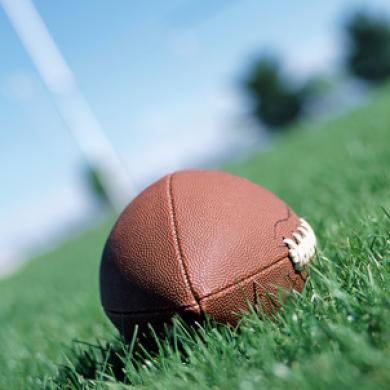College Football Handicapping – Start with the Fundamentals

Start with the Fundamentals When Handicapping College Football
Because the college football betting markets are still largely influenced by overall power ratings and team quality perceptions, you can find meaningful edges if you dig a little deeper to study the strengths and weaknesses of offenses and defenses.
It’s common in this sport to find games that are priced within a field goal or a TD where one team actually has a clear matchup advantage that they’re likely to exploit on the way to a comfortable victory. If you focus on the “chess” of football rather than general perceptions, you’ll be able to find and exploit these opportunities.
Offensive Fundamentals
Your first step is to focus on each team’s offense. What are they good at? What do they emphasize? Are they one-dimensional…meaning they focus most of their attack on the rushing game, or most of their attack on the passing game? Or, are their skill sets so dynamic and varied that they can get the job done in a variety of ways?
Use statistics from last season or all seasons under the current head coach to get a read. But, remember to adjust for this year’s skill set. A team that passed a lot last year with a superstar quarterback may cut way back on that approach if he graduated. A team that was led by a superstar running back may be forced to pass more often this year if that stud has moved on to the NFL.
Whether you’re handicapping your favorite conference, or the full college football betting slate, you must make a best estimate of how each team will try to move the ball during the season, and how successful they’re likely to be with that approach.
Defensive Fundamentals
Now you’re ready to look at defense. Be sure you have last year’s stats handy for yards-per-carry and yards-per-game rushing yards allowed, and yards-per-pass and yards-per-game allowed passing. Then, make adjustments for returning starters or any assistant coaching changes that could influence this year’s performances. You want to be able to state fairly confidently that “this team will be able to stop the run this year,” or “this team will get blown off the point of attack.” You’ll also want to know who will be relatively helpless on pass defense against teams who know how to throw.
Turnover Expectations
We’re most of the way there, but not quite all the way. In addition to the basic characteristics of dimensionality, you should also develop expectations for the turnover department. There are some handicappers and statheads who insist that turnovers are random…and you should just ignore them in your process because “turnover luck” will even out over the long haul. That’s not really the case. Sure, there’s a lot of randomness involved in the play-by-play dynamics of football, but:
- High-risk/high reward attacks commit more turnovers than conservative attacks
- Inexperienced quarterbacks commit more turnovers than veterans if asked to throw
- Offenses who don’t protect the QB are A LOT more turnover prone than those who do
- Road teams are generally slightly more turnover prone than home teams
- Teams who pass downfield on third down commit more turnovers than teams who try to run for it
Make an evaluation for each offense regarding how turnover prone they’re likely to be. You won’t nail them all, but common sense will have you in the right much more often than not.
Regarding a defense’s ability to force turnovers, look at recent numbers under the current coaching regime, particularly if the defensive coordinator has been there a long time. Some defenses are so conservative…with an attitude of “trying to keep everything in front of them,” that their forced turnover counts are low. Others take an NFL mindset and are constantly trying to dislodge the football. That’s going to matter, particularly when a mid-major offense is stepping up in class to face one of the power program’s elite defenses.
Don’t be one of those bettors who whines “turnovers are killing me” because they keep betting on high risk teams who are likely to lose the ball at least three times in challenging environments. It’s not “bad luck” if you picked a sloppy team on the road against an aggressive defense. You should have anticipated turnover issues.
Results follow logic …. for the most part
With all that work done on the classic fundamentals, you’re in position to analyze any game to visualize the most likely scenarios. Now…it’s college football…and some crazy things are still going to happen. But, for the most part, results do follow the logic of the skill set matchups. Teams who own the point of attack are going to control their own destiny. Teams with little hope of moving the ball consistently are going to get squashed. If the betting markets have properly anticipated those results, leave the game alone. You’ll be surprised how often that affordable favorites or live underdogs get the best of it in the chess analysis.
Look to bet on:
- Strong rushing teams vs. opponents who are soft against the run
- Strong rushing teams in weather conditions that inhibit passing
- Strong rushing teams vs. turnover-prone opponents
- Strong passing teams vs. opponents who play poor pass defense
- Strong passing teams vs. turnover prone opponents
- Strong passing teams in great weather conditions, particularly on a fast track
- Multi-dimensional offenses who can attack any weakness
- Strong rushing defenses vs. offenses that run at least 55% of the time
- Strong pass defenses vs. inexperienced quarterbacks
- Aggressive turnover-forcing defenses vs. mistake-prone offenses
- Quality defenses from “major” conferences vs. unimpressive mid-major offenses
You’ve probably had conversations with yourself in the past where you said something like “This team is great at running the ball but can’t throw worth a darn…I should just always bet them against bad run defenses but bet against them otherwise.” That’s right. This year, don’t just talk about it. Do it!
It’s easy to lose sight of what actually wins and loses football games if you’re overly focused on power ratings, computer ratings, pointspread trends, and situational angles (or, heaven forbid, TV studio shows). Those have a place in the process, often a very valuable place. But, every game is still a matchup of skill sets. Start with the matchup of skill sets, then adjust based on other factors.
If you do the work on fundamentals, then focus on the best handful of options per Saturday, you’re very likely to be pleased with the results.
Jeff Fogle is a freelance writer living in Austin, Texas. He writes about college and pro football, college and pro basketball, and MLB on his blog StatIntelligence. You can follow Jeff on Twitter @JeffFogle.









One thought on “College Football Handicapping – Start with the Fundamentals”